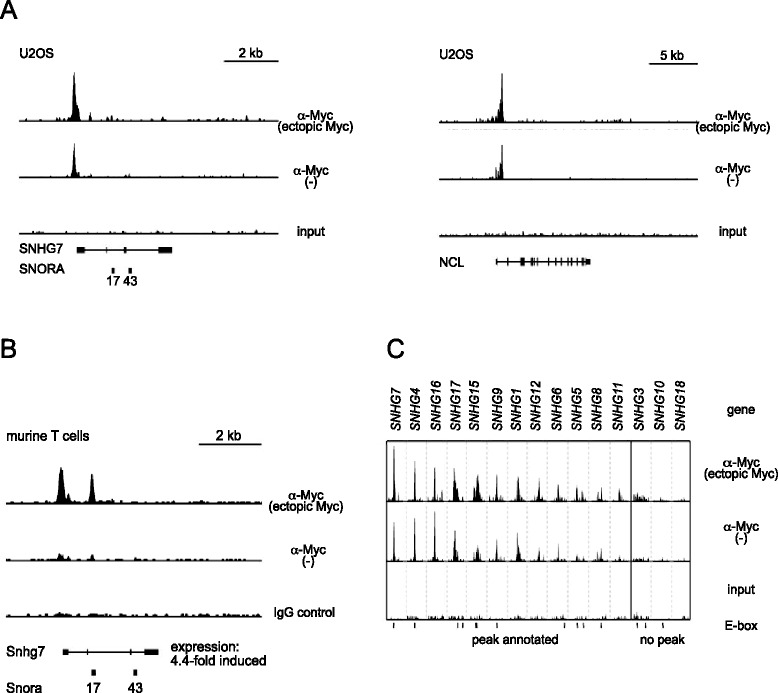Figure 4.

Myc binds to vertebrate non-coding snoRNA host genes (SNHGs). A) ChIPseq traces of SNHG7 (left) and NCL (right; a well characterized, strongly Myc-bound gene) in human U2OS cells, both shown at the same vertical scale. B) ChIPseq traces of SNHG7 in murine T cells; the expression level of SNHG7 drops by 4.4-fold after silencing of transgenic Myc expression. C) ChIPseq traces for all 15 SNHG loci in U2OS cells. Each window is 2 kb wide. Horizontal bars below the input samples denote canonical E-boxes. Samples ‘ectopic Myc’ contain overexpressed Myc, samples ‘-‘ only endogenous Myc; overexpression of Myc was induced (A; tet-on system) or repressed (B; tet-off system) by the addition of doxycyclin. ChIPseq, chromatin immunoprecipitation sequencing; snoRNA, small nucleolar RNA.
